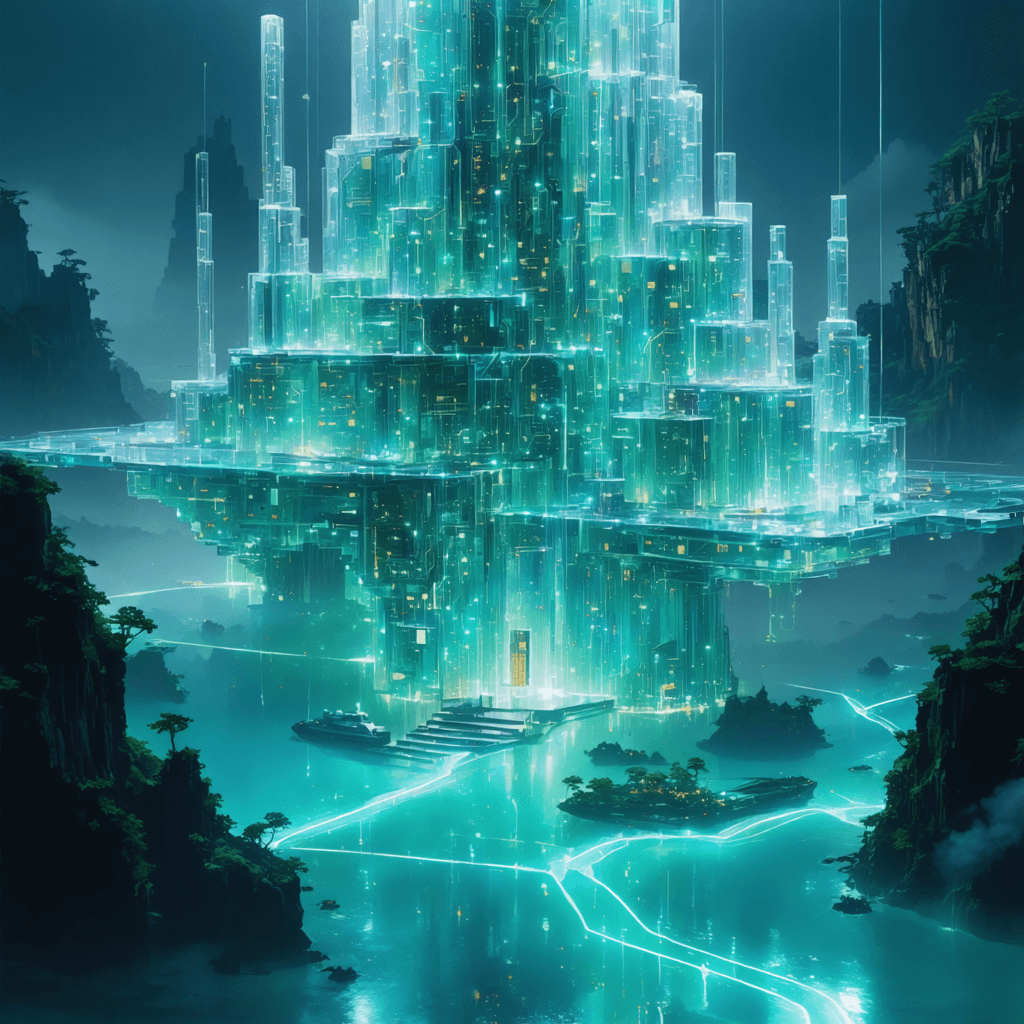Metaverso impulsado por GPU: Cómo la cadena de bloques está revolucionando las simulaciones digitales del mundo real en tiempo real
La convergencia de la tecnología GPU y blockchain está marcando el comienzo de una nueva era de experiencias digitales inmersivas, transformando fundamentalmente la forma en que interactuamos con los mundos virtuales. A medida que navegamos por 2025, el metaverso ha evolucionado de un marco conceptual a una realidad tangible, impulsado por avances tecnológicos sin precedentes en el procesamiento de gráficos y los sistemas de contabilidad distribuida.
La base: Arquitectura GPU e Integración Blockchain
La arquitectura moderna de GPU sirve como la columna vertebral de los entornos del metaverso, permitiendo la renderización en tiempo real de complejos mundos 3D con detalles fotorrealistas. Los últimos desarrollos de NVIDIA en su plataforma Omniverse demuestran cómo la tecnología GPU se ha vuelto fundamental en la creación y el mantenimiento de gemelos digitales de entornos del mundo real.

La integración de la tecnología blockchain agrega una capa crucial de descentralización y verificación de propiedad a estos entornos virtuales. Esta combinación ha dado lugar a mundos digitales persistentes donde los usuarios pueden realmente poseer activos virtuales, espacios y experiencias.
Simulación en Tiempo Real y Tecnología de Gemelos Digitales
El metaverso industrial ha surgido como un caso de uso destacado para los entornos blockchain impulsados por GPU. Empresas como Siemens están aprovechando estas tecnologías para crear gemelos digitales detallados de instalaciones de fabricación, infraestructura urbana y ciudades enteras.

Estos gemelos digitales permiten:
- Monitoreo y optimización en tiempo real de los procesos industriales
- Mantenimiento predictivo a través de análisis impulsados por IA
- Escenarios virtuales de capacitación y simulación
- Diseño e ingeniería colaborativos en espacios virtuales compartidos
El Papel de Blockchain en la Economía del Metaverso
La tecnología Blockchain ha revolucionado el marco económico de los mundos virtuales a través de:
- Propiedad de Activos Digitales: Propiedad verificable de bienes raíces virtuales, artículos y experiencias
- Interoperabilidad: Transferencia fluida de activos entre diferentes plataformas del metaverso
- Contratos Inteligentes: Ejecución automatizada de transacciones y acuerdos del mundo virtual
- Gobernanza Descentralizada: Toma de decisiones impulsada por la comunidad en entornos virtuales
Plataformas como The Sandbox han demostrado la viabilidad de las economías virtuales basadas en blockchain, donde los usuarios pueden crear, intercambiar y monetizar contenido digital dentro de un marco seguro.
Infraestructura Técnica y Optimización del Rendimiento
La implementación exitosa de entornos de metaverso impulsados por GPU se basa en varios componentes tecnológicos clave:
- Redes de Computación Distribuida: Permite el procesamiento sin problemas de cálculos complejos en múltiples nodos
- Soluciones de Escalado de Capa 2: Mejora el rendimiento de las transacciones y reduce los costos de las interacciones blockchain
- Tecnologías de Renderizado Avanzadas: Implementación de trazado de rayos y otras soluciones de iluminación realistas
- Integración de Computación de Borde: Reduce la latencia para interacciones en tiempo real en espacios virtuales
Impacto Social y Económico
La convergencia de la tecnología GPU y blockchain en el metaverso está creando nuevas oportunidades en varios sectores:
- Educación y Capacitación: Entornos de aprendizaje inmersivos con credenciales verificables
- Colaboración Remota: Espacios de trabajo virtuales mejorados con intercambio seguro de documentos
- Entretenimiento: Experiencias interactivas con verdadera propiedad digital
- Bienes Raíces: Mercados inmobiliarios virtuales con derechos de propiedad verificados por blockchain

Desarrollos Futuros y Desafíos
A medida que miramos hacia el futuro, varias áreas clave requieren un desarrollo continuo:
- Soluciones de Escalabilidad: Abordar las crecientes demandas de las transacciones del metaverso
- Eficiencia Energética: Desarrollar soluciones sostenibles para aplicaciones intensivas en GPU
- Estandarización: Crear protocolos unificados para la interoperabilidad
- Privacidad y Seguridad: Implementar mecanismos de protección robustos para los datos de los usuarios
Consideraciones Ambientales
La industria está trabajando activamente para abordar el impacto ambiental de las aplicaciones de metaverso intensivas en GPU a través de:
- Implementación de mecanismos de consenso energéticamente eficientes
- Desarrollo de técnicas de renderizado optimizadas
- Uso de fuentes de energía renovables para centros de datos
- Programas de compensación de carbono para redes blockchain
Conclusión
La combinación de la tecnología GPU y blockchain está remodelando fundamentalmente nuestro futuro digital. A medida que estas tecnologías continúan evolucionando, estamos presenciando el surgimiento de mundos virtuales cada vez más sofisticados e inmersivos que ofrecen oportunidades sin precedentes para la innovación, la colaboración y el crecimiento económico.
¿Listo para sumergirte más profundamente en el mundo de la tecnología blockchain y el metaverso? Explora nuestros cursos y recursos completos en 01TEK para mantenerte a la vanguardia en este panorama digital en rápida evolución. ¡Únete a nuestra comunidad de innovadores y da forma al futuro del metaverso!
Fuentes:
Your time is limited, so don’t waste it living someone else’s life. Don’t be trapped by dogma
which is living with the results of other people’s thinking. Don’t let the noise of other’s opinions drown out your own inner voice. And most important, have the courage to follow your heart and intuition. They somehow already know what you truly want to become. Everything else is secondary.”



